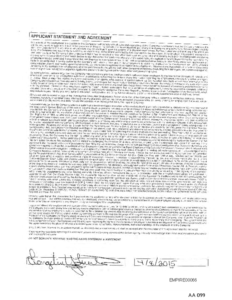Why the IRS Takes so Long to Respond
The Inspector General for the IRS (TIGTA) recently reported on the Accounts Management’s backlog. Accounts Management is primarily responsible for resolving taxpayer-initiated changes to their accounts and requests for information. Its objective is to close inventory within 45 calendar days of receipt. The actual average time for closing inventory was undisclosed, however, it takes the IRS an average of 30 calendar days just to scan taxpayer correspondence into the primary inventory management system. There are not any timeliness standards for screening correspondence. At the beginning of 2023, Accounts Management had a backlog of 6.2 million cases and 445,000 Forms 1040-X (amended tax returns).
TIGTA noted correspondence date discrepancies, inconsistent scanning priorities, and incorrectly routed cases, among other irregularities. For example, some correspondence screening occurred in employees’ personal residences rather than in the IRS mailroom. These issues were reportedly corrected. In addition, the IRS hired 214 mailing clerks to reduce the backlog. However, the IRS refuses to use mailing clerks to screen correspondence due to insufficient training for this purpose while simultaneously refusing to train them adequately. Beginning on February 28, 2022, 900 employees were reassigned from other IRS functions to form the Surge Team to assist in closing case inventories. No fewer than 189 Surge Team members failed to complete a single case and were tasked with answering phone calls instead (due to union restrictions). Those assigned to close Form 1040-X cases closed an average of 2.8 cases per hour compared to the 6.9 cases closed per hour by employees outside the Surge Team. The reassignments that made up the Surge Team caused a total of $398.7 million in revenue to be lost and $2.2 billion in revenue to be at least delayed and possibly lost.
“The IRS’s plan to automate efforts for Forms 1040-X is not occurring soon enough,” and manually entering data from Forms 1040-X annually incurs $322.2 million that could be saved through automation. TIGTA recommended temporarily prioritizing refund claims to minimize interest accruing on refund amounts and the IRS agreed. This report also explained that the IRS suffers from “programming limitations,” ultimately requiring manual refunds at a cost of $71 per manual refund.
Despite the time taken in responding to correspondence and amended returns, there is a high rate of improper payments. Specifically, the rates for improper payments are 32% for the Earned Income Tax Credit, 16% for the Additional Child Tax Credit, 36% for the American Opportunity Tax Credit, and 27% for the Net Premium Tax Credit. This means that about $26 billion out of the distributed $98 billion should not have been paid for these named credits alone.
If you have questions or concerns about how these news reports may affect you or your business, please contact The Burton Law Firm at: 916-822-8700 or email info@lawburton.com for a consultation.
Recent News
Contact Us
We look forward to hearing from you.
- CONTACT PAGE:
Info / Directions / Contact Form - EMAIL:
info@lawburton.com - PHONE:
+1 (916) 822-8700



